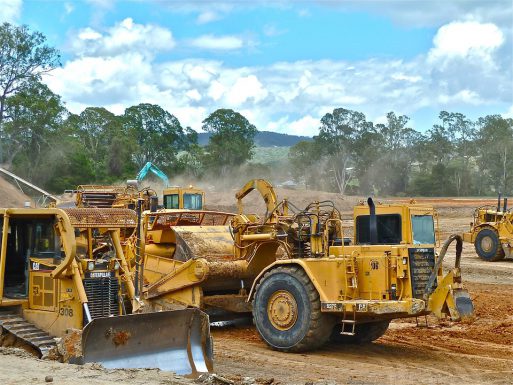BACHELOR'S DEGREE IN CIVIL ENGINEERING(Hons)
Third Year
Functions of several variables
Multiple Integration
Vector calculus
Transform methods
Fourier Series
Partial Differential equations
Matrices
Functions of complex variables
Methods of Integration
Partial fractions
Power/Binomial theorem
Laplace and it’s Inverse Transform
Bessel function
Introduction
Analysis of Statically Determinate Plane Frames
Beams
Columns
Torsion
Stress and Strain Transformations
Introduction to Redundant Structures
PART A: CIVIL ENGINEERING CONSTRUCTION MATERIALS
- Soils and Gravels
- Concrete
- Iron, Steel and Aluminium
- Timber
- Bricks and Blocks
- Bitumen and Asphalt
- Geotextiles and Geosynthetics
- Paving materials
- Use of Construction Materials in general
PART B: CIVIL ENGINEERING CONSTRUCTION PRINCIPLES
- Introduction
- Earthworks
- Introduction to Foundations
- Temporary Works
- External Works
Fluid Mechanics and Fluid Properties
Viscosity of Fluids
Hydrostatics
Basic concepts of fluid motion
Steady flow in pipes
INTRODUCTION TO SURVEYING
CHAIN SURVEYING
LEVELLING TECHNIQUES
SURVEY INSTRUMENTS
THE CO-ORDINATE SYSTEMS
TRAVERSING
AREAS AND VOLUMES FOR EARTH WORKS
- Building Construction Drawings
- Interpretation of construction drawings, different types of drawing i.e. general arrangement drawings, typical details, sections.
- Structural steel detailing, layout of assembly drawing, schedules of members and typical details.
- Timber detailing
- Reinforced Concrete Structural detailing of foundations, walls, Floors, Staircases, columns, beams, Roofs (with emphasis on connections) for masonry, bar bending schedules, and industrial buildings.
- Hints in linking, Zambian and British standards, plans, Elevations and sections for single storey buildings.
- FINAL PROJECT
Environmental Impact Assessment
Solid Waste Management:
Water Pollution
Air Pollution
Fourth Year
DESIGN:
Development and use of the Design Process in production of a design solution to a novel engineering design problem. Problem solving techniques.
Development and use of applicable analytical techniques used in proving a design solution.
Production of 3-D models and assemblies in support of a design solution.
Research and investigation into design possibilities, component or system availability and incorporation into a design, justification for a design configuration, innovation or adaptation.
Writing a design report containing an explanation and justification of the design
Unsteady flow in pipes
Hydraulic machines
Open channel flow
Dimensional analysis and model testing
PART 1 MECHANICS
- Review
- Bending stress distribution in composite and Unsymmetrical beams
- Shear stress distribution
- Torsion
- Cables
- Plastic Theory
- Plastic collapse analysis of continuous beams and framed structures
- Reinforced concrete
- Prestressed concrete
PART 2 ANALYSIS
- Influence lines
- Basic concepts of structural analysis
- Analysis of statically indeterminate structures.
Stress increases due to applied loading.
Consolidation and settlement.
Shear strength.
Slope stability.
Retaining walls.
Foundations
General geology
Surface processes, structural geology; geological maps; geophysics;
Numerical computing in Linear algebra
Z – transformation
Statistics
1.0 Introduction to Research Methodology
2.0 Research proposals
3.0 Methodology
4.0 Data Collection and Analysis
5.0 Presentation of Findings
6.0 Dissertation / Thesis Organization
FIFTH YEAR
Project management. Writing Aims and Objectives.
Investigation into an engineering problem or phenomenon
Research and analysis into relevant previous work on the problem or phenomenon being investigated.
Use of appropriate analysis techniques.
Use of appropriate design techniques (if required) and the production of appropriate designs (where necessary).
Production of hardware (where appropriate or necessary).
Testing and the production and interpretation of results.
Production of a project report that includes conclusions and recommendations.
Personal Development Planning (PDP).
Report writing
Introduction
Elements of engineering hydrology
Methods of estimating peak flows
River flow measurement
Groundwater
Hydraulic structures and conveyance systems
Probability, risk and uncertainty analysis for hydrologic and hydraulic design
Hydrology and water resources management
Water Supply Engineering
- Sources of Water
- Intakes and Transportation of water
- Water Quality
- Water treatment
- Distribution System and Lay-out
- Appurtenances in the Distribution System
Wastewater Engineering
- Quantity of wastewater
- Collection of wastewater
- Urban Storm water Drainage
- Sewer Appurtenances
- Low-cost sewerage
- Preliminary Wastewater treatment systems
- Primary Wastewater treatment systems
- Biological treatment Processes –
- Sludge Treatment and Disposal
INTRODUCTION
PROJECT PROCUREMENT
CONTRACT ADMINISTRATION
PROJECT PLANNING
INTRODUCTION TO CONSTRUCTION ECONOMICS AND FINANCE
CLAIMS AND DISPUTES
DESIGN OF STEEL STRUCTURES
REINFORCED CONCRETE DESIGN
COMPOSITE CONSTRUCTION
STRUCTURAL TIMBER DESIGN
DESIGN OF MASONRY STRUCTURES
Highway planning
Highway economics
Materials testing
Highway drainage
Pavement design
Highway Maintenance and Management
Geometric design of facilities
TRANSPORTATION ENG
ENVIRONMENTAL IMPACT ASSESSMENT
TRAFFIC FLOW
TRAFFIC CONTROL
The Geological Environment
Classification & Index Properties of Rocks
Rock Mass Strength
Excavations and tunnels in rock
Slope Stability
Weathering and Soils
Geological Construction Materials
Hydrogeology
Site Investigation Geophysical surveys

